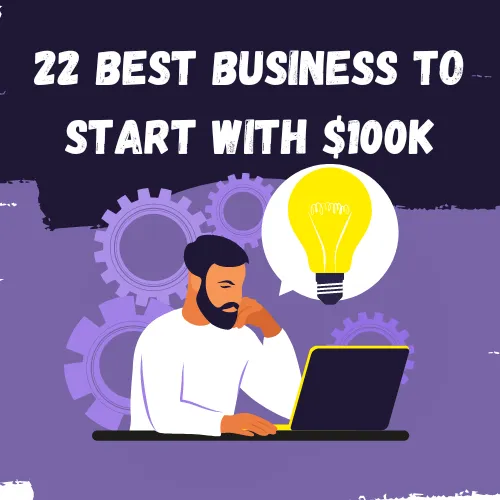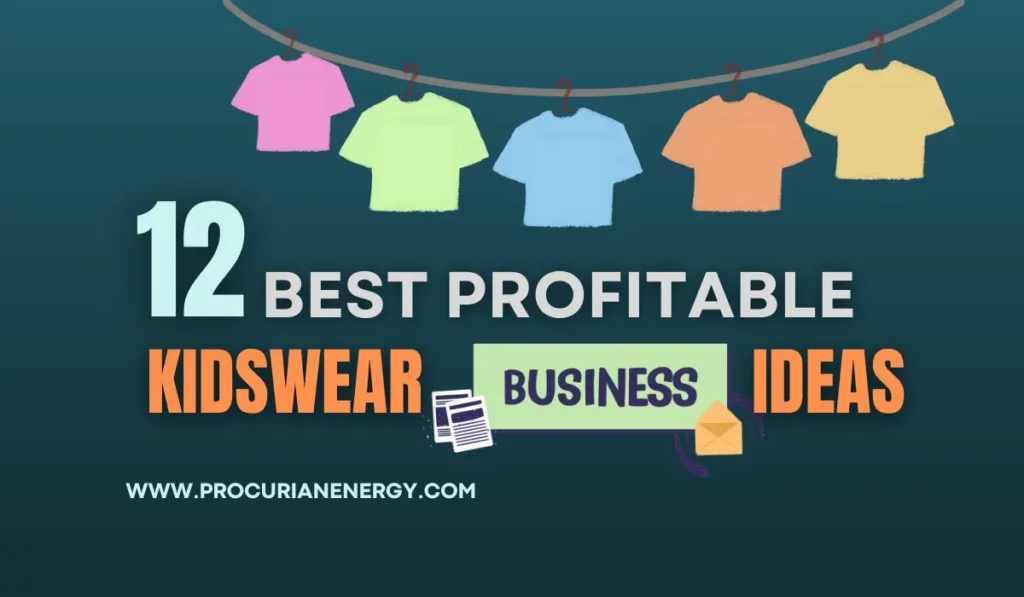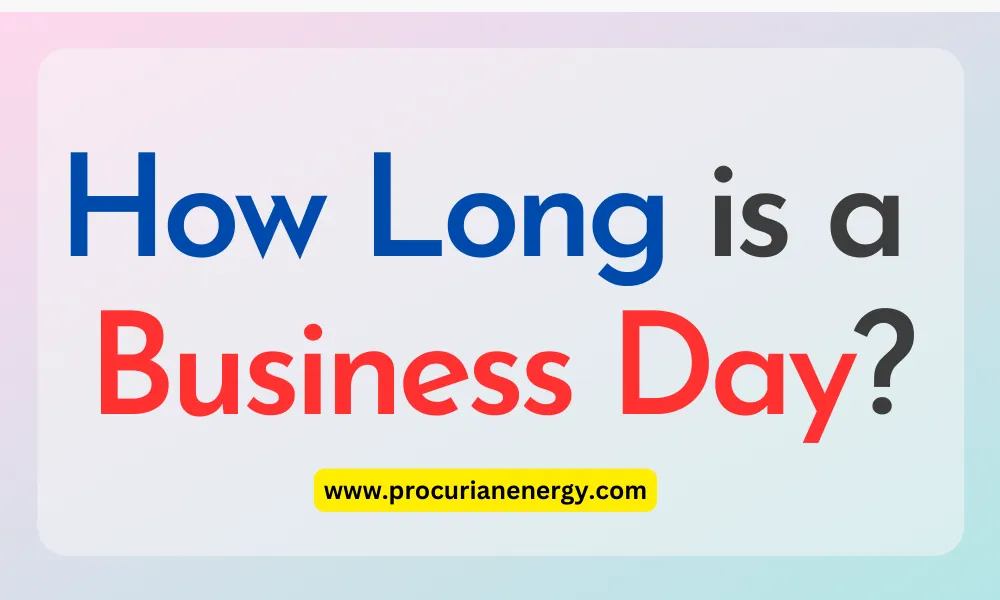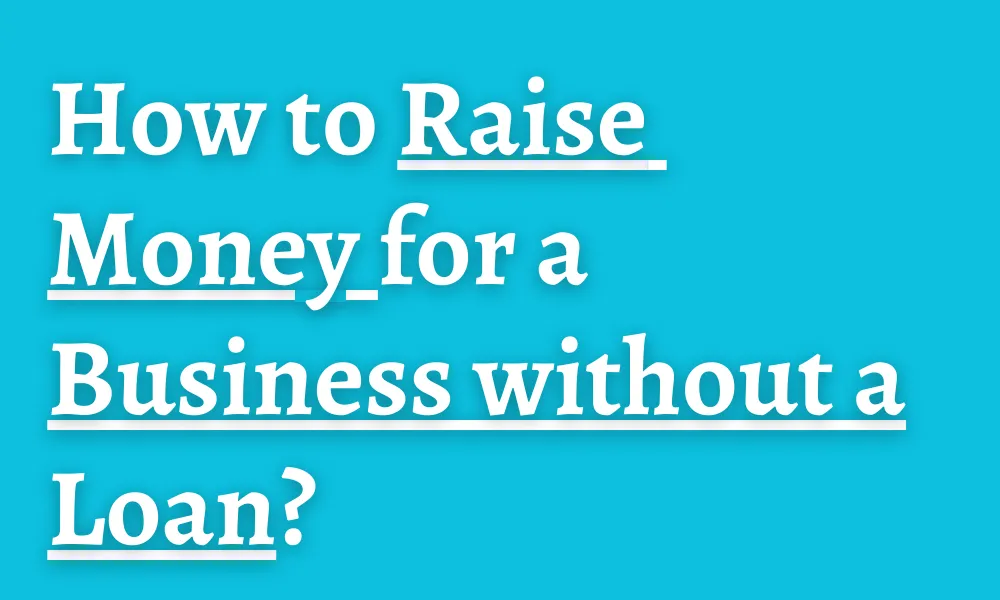Starting a business with $100K can be an exciting and rewarding experience. With the right business idea and strategy, you can turn your investment into a profitable venture.
However, it is essential to choose the right business idea that aligns with your interests, skills and resources.
In this article, we will explore the best business ideas to start with $100K and the steps to take to launch a successful business.
22 Best Business To Start With $100K

1. E-commerce store
| Expense/Revenue | Amount & Details |
|---|---|
| Investment amount | $100,000 |
| Business type | E-commerce store |
| Business model | Online retail sales |
| Target market | Consumers in a specific niche |
| Product selection | High-margin products with demand |
| Website development | $1,000-$5,000 |
| Inventory costs | $60,000-$70,000 |
| Marketing expenses | $10,000-$15,000 |
| Shipping and fulfillment | $5,000-$7,000 |
| Return on investment | 20-30% annually |
| Payback period | 3-4 years |
An E-commerce store might be opened with $100K and be a lucrative business. With the right business strategies, you can grow your business and bring in a steady flow of money.
You may start a number of e-commerce enterprises with $100K, including clothing, jewelry, electronics, health & wellness and clothing stores.
Before launching your store, you need conduct market research to identify your target market, their needs and the rivals.
Once you’ve chosen your area of expertise, you may establish your website, purchase inventory, and make marketing and promotion purchases. You may also consider using a dropshipping model if you want to reduce inventory costs and hasten delivery.
If you want to succeed in e-commerce sector, you must focus on providing good customer service & effective social media presence.
2. Food truck
| Expense/Revenue | Amount & Details |
|---|---|
| Initial Investment | $100,000 |
| Truck and Equipment | $50,000 |
| Permits and Licenses | $3,000 |
| Inventory | $10,000 |
| Marketing | $2,000 |
| Operational Expenses (Rent, utilities, etc.) | $10,000 |
| Salaries and Wages | $25,000 |
| Total Expenses | $100,000 |
| Average Sale Per Customer | $12 |
| Number of Customers Per Day | 100 |
| Average Number of Operating Days Per Year | 250 |
| Total Annual Revenue | $300,000 |
| Gross Profit Margin | 60% |
| Annual Gross Profit | $180,000 |
| Return on Investment | 80% |
You may start by using this money to buy a car, equipment and goods. Success depends on conducting market research, creating a unique menu and creating a social media presence. Consider attending local food truck events to network and gain exposure.
You must also get the necessary rights and licenses in order to operate legally. With dedication and hard work, a food truck business may prosper and provide flexibility and creative freedom for you to showcase your culinary abilities.
Also See: How To Make Money on Amazon Without Selling?
3. Social media marketing agency
| Expense/Revenue | Amount & Details |
|---|---|
| Initial Investment | $100,000 |
| Operating Expenses (yearly) | $60,000 |
| Revenue (yearly) | $300,000 – $500,000 |
| Net Profit (yearly) | $150,000 – $300,000 |
| Break-even Point | 8 – 12 months |
Starting a social media marketing agency with $100K might be a great opportunity for business owners who are enthusiastic about helping companies thrive online.
Spending this money on crucial resources like a website, social media management software, content creation tools and paid advertising are all options. Putting together a solid team of social media experts and designers may enable you to provide your clients top-notch services.
It’s essential to have a unique marketing strategy, target market and speciality if you want to stand out in the crowded social media marketing scene. By delivering results for your clients and building a strong reputation, you may eventually attract new business and grow your firm.
4. Graphic design agency
| Expense/Revenue | Amount & Details |
|---|---|
| Initial Investment | $100,000 |
| Business Type | Graphic design agency |
| Startup Costs | $30,000 |
| Operating Costs | $10,000 |
| Revenue Streams | $50,000 |
| Projected Annual Revenue | $300,000 – $500,000 |
| Projected Annual Profit | $50,000 – $100,000 |
| Return on Investment (ROI) | 25% |
| Break-Even Point | 2-3 years |
| Profit Margin | 20-30% |
| Growth Potential | High |
| Risks and Challenges | Competition, economic downturns, high turnover rates |
With $100,000, you may buy the essential equipment and software, such as Adobe Creative Suite, a premium printer and a powerful computer. You may also set aside some of your money to promote your services and build your brand.
By employing top designers and offering competitive rates, you may stand out in a congested market. With persistence, dedication and a specific objective, your graphic design business may flourish and grow over time.
5. Coffee shop
| Expense/Revenue | Amount & Details |
|---|---|
| Initial Investment | $100,000 |
| Location | Urban area |
| Shop size | 800 sq. ft. |
| Rent | $3,000/month |
| Equipment | $40,000 |
| Inventory | $10,000 |
| Employee salaries | $30,000/year |
| Operating expenses | $40,000/year |
| Gross revenue/year | $400,000 |
| Net profit/year | $100,000 |
| Return on investment | 100% |
It is possible to open a coffee business for $100K, but careful management and planning are required. The first step in distinguishing your business is to do market research and identify a niche or USP.
Consider the site, the lease terms, the necessary equipment and the employees after that. Saving money could be possible with lessened space and a menu with fewer selections. Focus on creating a welcoming environment and providing excellent products and customer service.
By employing social media and local events, you may build a loyal consumer base. A coffee shop business may be rewarding and profitable with a low initial investment provided care and work are put into it.
Also See: How to Make Money on ETSY without Making Anything?
6. Cleaning service
| Expense/Revenue | Amount & Details |
|---|---|
| Business Type | Cleaning Service |
| Investment Amount | $100,000 |
| Equipment and Supplies | $10,000 |
| Office Space Rent | $12,000 |
| Insurance and Legal Fees | $5,000 |
| Marketing and Advertising | $8,000 |
| Employee Salaries | $45,000 |
| Expected Annual Revenue | $150,000 – $300,000 |
| Profit Margin | 10% – 20% |
| Breakeven Point | 12-18 months |
| ROI (Return on Investment) | 30% |
| Growth Potential | High, due to increasing demand for cleaning services post-pandemic |
| Competition | High, but can differentiate by offering specialized services, eco-friendly products, or exceptional customer service |
| Risks | Economic downturn, legal liability, employee turnover, negative reviews |
Starting a cleaning service business with $100,000 is an excellent investment option for aspiring business entrepreneurs. With this money, you may hire workers, purchase the cleaning supplies you need and promote your business to new clients.
By offering specialized services like green cleaning or post-construction cleaning, you may set yourself apart from competitors.
By establishing a positive client experience, quality work and excellent customer service will encourage return business and recommendations. With dedication and hard effort, a cleaning service firm may offer a fulfilling and successful career.
7. Personal trainer
| Expense/Revenue | Amount & Details |
|---|---|
| Business Type | Personal Trainer Business |
| Investment Amount | $100,000 |
| Allocation of Investment | Equipment, Rent, Marketing, Staffing, Insurance, Licenses and Permits, Legal Services |
| Equipment | $20,000 for cardio equipment, weights and accessories |
| Rent | $25,000 for a 1-year lease on a 1,500 sq. ft. space |
| Marketing | $15,000 for website development, advertising and social media campaigns |
| Staffing | $30,000 for 2 trainers’ salaries for a year |
| Insurance | $5,000 for liability insurance |
| Licenses and Permits | $2,000 for required permits and licenses |
| Legal Services | $3,000 for legal advice and services |
| Revenue Streams | Personal Training sessions, Group fitness classes, Nutritional coaching, Online training programs |
| Pricing | $75 per hour for personal training sessions, $20 per group fitness class, $150 for nutritional coaching sessions, $100 for online training programs |
| Expected Clients | 50 clients per week |
| Annual Revenue | $195,000 (based on 50 clients per week, 4 sessions per month, and 20 group fitness classes per month) |
| Annual Expenses | $120,000 (rent, staffing, insurance, licenses, permits, legal fees, equipment maintenance, utilities) |
| Annual Profit | $75,000 |
| Return on Investment (ROI) | 75% |
You could start your own personal training business with $100,000. With this money, you’ll be able to hire a small gym, purchase athletic equipment, and cover your initial promotional costs.
Consider specializing on a particular area, like postpartum fitness or weight loss for seniors, to differentiate yourself from other trainers in your area.
To attract new clients, establish a strong online presence using social media and a company website. Invest in continuing education to stay up to date with the newest fitness trends and techniques.
8. Freelance writing
| Expense/Revenue | Amount & Details |
|---|---|
| Business Type | Freelance writing |
| Total Investment | $100,000 |
| Website Creation and Design | $3,000 |
| Marketing Expenses | $7,000 |
| Office Supplies and Equipment | $10,000 |
| Hiring Freelance Writers | $50,000 |
| Legal and Accounting Services | $5,000 |
| Miscellaneous Expenses | $17,500 |
| Estimated Annual Revenue | $150,000 |
| Estimated Annual Profit | $70,000 |
| Estimated Time to Break Even | 1.5 – 2 years |
Starting a freelance writing business with $100K might be a great way to start a successful career. With this money, you might build a strong online presence, create a respectable website and purchase the necessary hardware and software.
To attract new clients, you may use some of the funds for marketing and advertising. You may also consider hiring a virtual assistant or editor to help you manage your workload and improve the quality of your writing.
Also See: How To Make Money on Rumble?
9. Pet grooming
| Expense/Revenue | Amount & Details |
|---|---|
| Initial Investment | $100,000 |
| Business Type | Pet Grooming Business |
| Location | Urban Area |
| Business Structure | Sole Proprietorship |
| Equipment and Supplies | $25,000 |
| Leasehold Improvements | $20,000 |
| Insurance and Permits | $5,000 |
| Marketing and Advertising | $10,000 |
| Salaries and Wages for Staff | $30,000 |
| Miscellaneous Expenses | $10,000 |
| Annual Revenue | $200,000 – $400,000 |
| Gross Profit Margin | 50% – 60% |
| Payback Period | 2 – 4 years |
| Return on Investment (ROI) | 25% – 50% |
You can start a pet grooming business with about $100K and turn your passion for animals into a lucrative career. You may purchase the necessary equipment, rent a space, hire staff and cover additional expenses like marketing, licenses and insurance with this budget.
A solid business plan that describes your target market, the services you’ll offer, your pricing, and your marketing strategy is essential.
The key to success will be building a loyal clientele by providing excellent service and excellent grooming. Consider offering additional services like pet daycare, pet sitting or selling merchandise to increase revenue.
10. Online education platform
| Expense/Revenue | Amount & Details |
|---|---|
| Initial Investment | $100,000 |
| Business Type | Online Education Platform Business |
| Investment Period | 5 Years |
| Annual Growth Rate | 20% |
| Total Return | $324,340 |
| Average Annual Return | 25.35% |
| Break-even Period | 2.5 Years |
| Net Profit | $224,340 |
| Return on Investment | 224.34% |
The key is to identify a specific target group or niche and provide them high-quality educational resources that meet their needs.
Employing low-cost marketing strategies such as content marketing and social media, may help in attracting clients and building a loyal following.
Controlling student progress and delivering courses requires a user-friendly website and effective learning management system.
Collaborating with industry experts and offering certifications can also enhance the credibility of the platform.
11. Vacation rental business
| Expense/Revenue | Amount & Details |
|---|---|
| Investment | $100,000 |
| Rental Property | 1 vacation rental property purchased with the investment |
| Property Value | $400,000 (average cost of vacation rental property) |
| Down Payment | $80,000 (20% down payment on the property value) |
| Mortgage | $320,000 (mortgage on the remaining 80% of the property value) |
| Monthly Payment | $1,500 (estimated mortgage payment including taxes and insurance) |
| Rental Income | $4,000 per month (estimated average rental income) |
| Expenses | $2,000 per month (estimated maintenance, utilities, and other expenses) |
| Net Income | $2,000 per month ($4,000 rental income – $2,000 expenses) |
| Annual Return | $24,000 per year ($2,000 net income x 12 months) |
| Return on Investment (ROI) | 24% (annual return on investment divided by the initial invest |
Start by looking at the best places, amenities and rental rates in the neighborhood of your choosing. Create a stunning listing for your home on well-known vacation rental websites and then promote it to prospective guests.
Whether you manage your rental yourself or employ a property management, make sure it is clean and well-maintained. With dedication and persistence, your vacation rental business may produce a steady stream of income and long-term financial security.
Also See: How To Make Money with Solar Panels?
12. Daycare center
| Expense/Revenue | Amount & Details |
|---|---|
| Initial Investment | $100,000 |
| Startup Costs | Building Lease/Renovation: $20,000 Equipment and Supplies: $20,000 Insurance: $5,000 Licenses and Permits: $2,000 Marketing and Advertising: $3,000 Legal and Accounting: $5,000 |
| Operating Costs (Monthly) | Rent: $5,000 Salaries and Wages: $20,000 Utilities: $2,000 Insurance: $1,000 Supplies: $1,500 Maintenance and Repairs: $1,000 Miscellaneous: $1,000 |
| Revenue | Tuition Fees: $20,000/month Enrollment Capacity: 30 children Enrollment Rate: 80% Annual Revenue: $240,000 |
| Return on Investment (ROI) | 20% – 30% per year, depending on the revenue generated and the operating expenses incurred. |
| Break-Even Period | 1 – 2 years |
With the growing number of working parents, the demand for quality childcare has never been increased. A successful daycare facility must include age-appropriate toys and activities, a safe atmosphere and qualified staff.
The initial investment might be used to pay for the site, license fees, insurance premiums and marketing expenses. Your daycare center could be able to distinguish out from competitors with a unique and warm atmosphere.
Offering flexible schedules, meals and transportation may appeal to parents who are busy. A daycare center could be a fulfilling and prosperous business that helps families and communities.
13. Lawn care service
| Expense/Revenue | Amount & Details |
|---|---|
| Initial Investment | $100,000 |
| Equipment and Supplies | $30,000 |
| Business License and Insurance | $5,000 |
| Marketing and Advertising | $10,000 |
| Salaries and Wages (for 2-3 employees) | $40,000 |
| Miscellaneous Expenses | $10,000 |
| Annual Revenue | $250,000 |
| Annual Profit | $40,000 – $50,000 |
| Return on Investment (ROI) | 25% |
Starting a lawn care service company with $100K is a fantastic opportunity for business owners interested in the green sector. With this money, you may purchase the equipment you need including safety equipment, trimmers, blowers and mowers.
You might also invest in marketing strategies to reach out to potential customers via online platforms, local newspapers, or fliers.
Offering additional services such as landscape design, weed control or tree pruning can boost revenue sources.
Both the choice of skilled individuals and a business plan that outlines financial projections, goals and techniques for regulating cash flow are crucial.
A stable income, satisfied customers and a green environment are all benefits of a successful lawn care service business over the long run.
14. Event planning
| Expense/Revenue | Amount & Details |
|---|---|
| Initial Investment | $100,000 |
| Office Rent and Utilities | $30,000 |
| Equipment and Supplies | $15,000 |
| Employee Salaries and Benefits | $40,000 |
| Marketing and Advertising | $10,000 |
| Insurance and Legal Fees | $5,000 |
| Number of Events per Year | 20-30 |
| Gross Profit Margin | 60% |
| Annual Gross Profit | $60,000 |
With the right plan and execution, this budget may cover initial costs such as furniture, office space and early marketing initiatives.
It’s vital to carefully assess your target market and area of expertise if you want to maximize profits and differentiate yourself from competitors in the event planning sector.
Networking within the industry and building a strong online presence are also necessary for success.
Offering exceptional client service, developing unique and personalized event experiences and always observing and adapting to industry trends and changes are all ways to assure a successful and long-lasting business.
15. Travel agency
| Expense/Revenue | Amount & Details |
|---|---|
| Initial Investment | $100,000 |
| Business Type | Travel Agency |
| Revenue Streams | Commission from airline, hotel and car rentals |
| Return on Investment (ROI) | Estimated to be 15-20% annually |
| Annual Revenue | $250,000 – $350,000 |
| Annual Expenses | $180,000 – $220,000 |
| Net Income | $70,000 – $130,000 |
| Break-even Point | Approximately 2-3 years |
| Growth Potential | High – the travel industry is constantly growing and changing |
| Risks and Challenges | Competition from online travel booking platforms, unpredictable changes in travel trends and regulations, seasonality of the travel industry |
| Strategies for Success | Strong online presence, personalized customer service, partnerships with hotels and other travel industry stakeholders, diversification of revenue streams |
To set yourself apart from your competitors, you must first conduct research on your specialized market.
This might mean offering unique travel experiences or specializing in a certain travel niche such as luxury or adventure travel.
You’ll also need to invest in reliable software and booking systems to manage your clients’ travel arrangements.
Also See: How to Make Money from Property Development?
16. Bookkeeping
| Expense/Revenue | Amount & Details |
|---|---|
| Business type | Bookkeeping |
| Initial investment | $100,000 |
| Expenses | Rent, utilities, payroll, software, marketing, insurance |
| Revenue streams | Monthly bookkeeping fees, project-based services |
| Potential returns | Annual revenue of $150,000 – $200,000 |
| Timeframe for returns | 1-3 years |
| Return on investment | 50-100% |
| Risks and challenges | Competition, technological changes, client retention |
| Growth potential | High |
For individuals with prior experience, investing $100,000 to start a bookkeeping business may be sensible.
To attract clients, a website setup, marketing and advertising may all be done for a little amount of money.
Additionally, investing in professional accounting software and technology may boost accuracy and efficiency.
Employing workers, such as more bookkeepers or administrative staff, may help support business growth and increase revenue.
Establishing a strong network of nearby businesses and providing competitive pricing can help build trust and draw in return customers.
A Bookkeeping business may grow quickly and make money with proper planning and capable management.
17. Home renovation service
| Expense/Revenue | Amount & Details |
|---|---|
| Initial investment | $100,000 |
| Annual revenue | $500,000 |
| Gross profit margin | 30% |
| Gross profit | $150,000 |
| Operating expenses (including salaries) | $100,000 |
| Net profit | $50,000 |
| Return on investment (ROI) | 50% |
| Payback period | 2 years |
Starting a $100k home renovation services business might be gratifying. With this expenditure cap, one may begin by offering simple home remodeling services like painting, flooring and plumbing.
Before you start, you must undertake market research, select your target market and create a company plan.
18. Photography business
| Expense/Revenue | Amount & Details |
|---|---|
| Initial investment amount | $100,000 |
| Business type | Photography business |
| Return on investment | $150,000 – $200,000 or more (depending on success) |
| Timeframe | 1-3 years |
| Business expenses | Camera and equipment, studio rental, website hosting, marketing and advertising, transportation, insurance, accounting, and legal fees, etc. |
| Revenue streams | Event photography (e.g., weddings, corporate events), commercial photography (e.g., product photos, real estate), portrait photography (e.g., family, headshots), stock photography and other photography-related services (e.g., photo editing, retouching) |
| Profit margin | Varies depending on the revenue stream and expenses, but typically ranges from 30% to 50% |
| Growth potential | Depends on factors such as market demand, competition, marketing efforts and the ability to offer unique or high-quality services |
With $100K, you may launch a successful photography business and transform your hobby into a successful business.
You may purchase high-quality equipments, hire a studio and successfully promote your services.
Create a portfolio of your greatest work to begin started, and build a solid online presence on websites and social media.
Think about providing a range of photographic services including commercial, portrait and wedding photography.
You may increase your exposure and expand your clientele by networking with other industry professionals.
19. Personalized gift business
| Expense/Revenue | Amount & Details |
|---|---|
| Business Type | Personalized Gift Business |
| Investment Amount | $100,000 |
| Products | Personalized gifts such as photo frames, custom mugs, engraved jewelry, etc. |
| Target Market | Millennials and Gen Z who are tech-savvy and value personalized items |
| Marketing Strategy | Social media advertising, email marketing, influencer marketing |
| Estimated Revenue | $250,000 – $500,000 in the first year |
| Estimated Return on Investment (ROI) | 25% – 50% in the first year |
| Break-even Point | Approximately 6 – 12 months |
| Risks | Increased competition, economic downturn, changes in consumer preferences |
| Potential for Growth | Expanding product line, offering corporate gifting services, opening physical stores |
Starting by establishing an online presence through a website and social media accounts.
This enables speedy outreach to and communication with potential customers. Prior to selecting reliable manufacturers and suppliers of goods and materials, it is vital to complete your research.
You must also create a variety of unique products that customers may customize. A effective marketing strategy always includes special offers or discounts for new customers.
20. Car rental business
| Expense/Revenue | Amount & Details |
|---|---|
| Initial Investment | $100,000 |
| Business Type | Car Rental Business |
| Location | Urban or suburban area |
| Rental Fleet Size | 10-15 vehicles |
| Rental Fees | $50-$100 per day, depending on the type of vehicle |
| Occupancy Rate | 70% |
| Average Rental Period | 3-5 days |
| Operating Expenses | Employee salaries, vehicle maintenance, insurance, etc. |
| Potential Returns | $200,000 – $300,000 annually (after expenses) |
You can launch a successful cars rental business with $100,000. This amount of money might be used to employ a small office, purchase a fleet of high-end vehicles and fund marketing initiatives to attract customers.
By offering a number of vehicles and rental options such as daily, weekly or monthly rentals, you may appeal to a broad range of clients.
For both you and your clients, pick-up and drop-off services at hotels or airports may be beneficial.
Also See: How to Make Money in Commercial Real Estate?
21. Delivery Service
| Expense/Revenue | Amount & Details |
|---|---|
| Initial investment | $100,000 |
| Operating expenses | $30,000 per year |
| Revenue per delivery | $15.00 |
| Average number of deliveries per day | 100 |
| Average number of working days per year | 250 |
| Annual revenue | $375,000 |
| Annual operating expenses | $30,000 |
| Annual net income | $345,000 |
| Return on investment (ROI) | 345% |
| Revenue Streams | -Delivery fees -Subscription plans -Advertising -Partnerships with local businesses |
| Growth Opportunities | -Expanding to new locations, -Offering new services (e.g. same-day delivery, grocery delivery), -Partnering with more businesses, -Improving technology infrastructure |
With this amount of money, you might purchase a small fleet of delivery vehicles, hire a group of dependable and efficient drivers, and create an user-friendly online ordering and delivery tracking system.
To boost profitability, think about specializing in a certain industry, such food delivery or last-mile logistics.
Additionally, you may offer package tracking, real-time delivery updates and secure delivery options.
By providing excellent customer service and employing digital marketing tools, you may grow your company quickly and gain a loyal audience.
22. Personal chef business
| Expense/Revenue | Amount & Details |
|---|---|
| Initial Investment | $100,000 |
| Equipment and Supplies | $20,000 |
| Rent and Utilities | $25,000 |
| Employee Salaries for the first year | $40,000 |
| Marketing and Advertising | $10,000 |
| Insurance | $5,000 |
| Miscellaneous expenses | $5,000 |
| Expected Annual Revenue | $200,000 |
| Gross Profit Margin | 60% |
| Expected Annual Net Profit | $72,000 |
| Return on Investment (ROI) | 72% |
Personal chefs commonly make meals for individuals or families in their homes.
A personal chef may prove to be an important resource for busy families and working individuals given the rising demand for healthful & home-cooked meals.
To start your business, you’ll need to invest money on a few necessary goods like pots, pans, kitchenware and hiring experienced and skilled chefs.
Conclusion
When selecting a business idea, it is important to consider factors including profit potential, market demand, competition, scalability and personal interest.
Among the many different sectors to consider are real estate firms, franchise businesses, service-based organizations and e-commerce businesses.
To launch a successful business, do significant research, register your company, obtain money and implement marketing strategies.
If you use the right strategy, your investment might grow into a profitable enterprise.
FAQs
What kind of business can I start with 100K?
With just $100K, you could launch a number of low-cost companies like a house cleaning service, a food truck or an online store selling specialized products.
What are the most successful small businesses?
The most successful small businesses differ by industry and region, but common examples include food trucks, online stores, consulting firms and specialized retail stores.
Which business is easy to start?
A service-based business such as consulting, freelancing or teaching, may be relatively easy to start with low startup costs and the ability to work from home.
What business makes the most money fast?
Investments in real estate and high-growth technological businesses have the potential to generate significant profits quickly.
How do I know if my business idea is profitable?
Conduct market research to determine the degree of demand for your product or service. To estimate your future revenue and expenses, make careful financial projections and a business plan. Test your idea in a small market before investing more money.
How can I make sure my business is successful in the long run?
Spend your time and effort providing premium products and services together with quality customer service. Constantly search out new and improved ways to innovate while staying up to date with market advancements.





